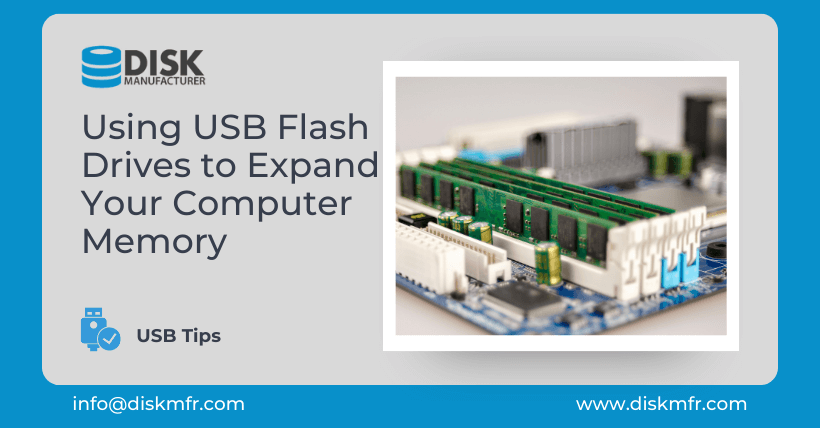USB flash drives have become ubiquitous tools for storing and transferring data In today’s digital age. Most of us are familiar with their primary function, but did you know that they can be used to augment your computer’s memory? This lesser-known application can significantly alleviate memory constraints and boost your computer’s performance. In this article, we’ll delve into the intriguing process of transforming a USB flash drive into a temporary memory extension for your computer.
01
Understanding the Magic of USB Flash Drives
USB flash drives are typically associated with file storage. They are compact, portable, and offer a convenient way to transport data from one device to another. However, these versatile devices can do much more. They can temporarily act as an extension of your computer’s memory, which can be a game-changer when your system is running low on resources.
02
Step-by-Step Guide to Utilizing a USB Flash Drive for Extra Memory
1. Right-click and Access Properties
The first step in this process is straightforward. Insert your USB flash drive into your computer and right-click on it. From the context menu that appears, select ‘Properties.’
2. Navigating to ReadyBoost
After clicking ‘Properties,’ a window will pop up with various tabs. To use your USB flash drive as extra memory, click on the ‘ReadyBoost’ tab. Here, you will encounter three radio buttons.
3. Enable ReadyBoost
To utilize your USB flash drive as an additional memory source, select ‘Use this device.’ Below this option, you’ll find a drag box or text box to allocate the desired space on your USB drive to enhance your system’s performance. Once you’ve made your selection, click ‘OK.’
4. Observe the Changes
Once you’ve completed the previous step, open your USB flash drive. You’ll notice a ReadyBoost file with a size corresponding to your previous setting. This file serves as a temporary extension of your computer’s memory.
5. Reversibility of the Process
The beauty of this method is that it’s reversible. If you wish to restore your USB flash drive to its standard file storage function, follow these steps:
- Right-click on the USB drive.
- Select ‘Properties.’
- Click the ‘ReadyBoost’ tab.
- Choose ‘Do not use this device.’
And just like that, your USB flash drive will be back to its original state, ready for file storage once again.
03
Conclusion
Using a USB flash drive to expand your computer’s memory is a valuable trick to have up your sleeve. It’s a quick and efficient way to boost your system’s performance when you’re faced with low memory. So, next time your computer is running sluggishly, remember the magic of your trusty USB flash drive and its potential to provide a memory boost.
04
FAQs (Frequently Asked Questions)
Q1. Is using a USB flash drive as extra memory a permanent change?
No, it’s a reversible process. You can easily switch between using your USB flash drive as extra memory and regular file storage.
Q2. How much space should I allocate for ReadyBoost on my USB drive?
The space you allocate depends on your computer’s specifications and your specific needs. Experiment with different sizes to find the optimal balance for your system.
Q3. Can I use multiple USB flash drives for ReadyBoost?
Yes, you can use multiple USB drives to further extend your computer’s memory, provided your system supports it.
Q4. Will using ReadyBoost on a USB drive improve my computer’s performance noticeably?
The improvement in performance will depend on your computer’s existing configuration. If your system is struggling with low memory, ReadyBoost can make a significant difference.
Q5. Can I use any USB flash drive for ReadyBoost?
Not all USB drives are suitable for ReadyBoost. It’s essential to use a USB flash drive with the necessary specifications to ensure compatibility and optimal performance.









